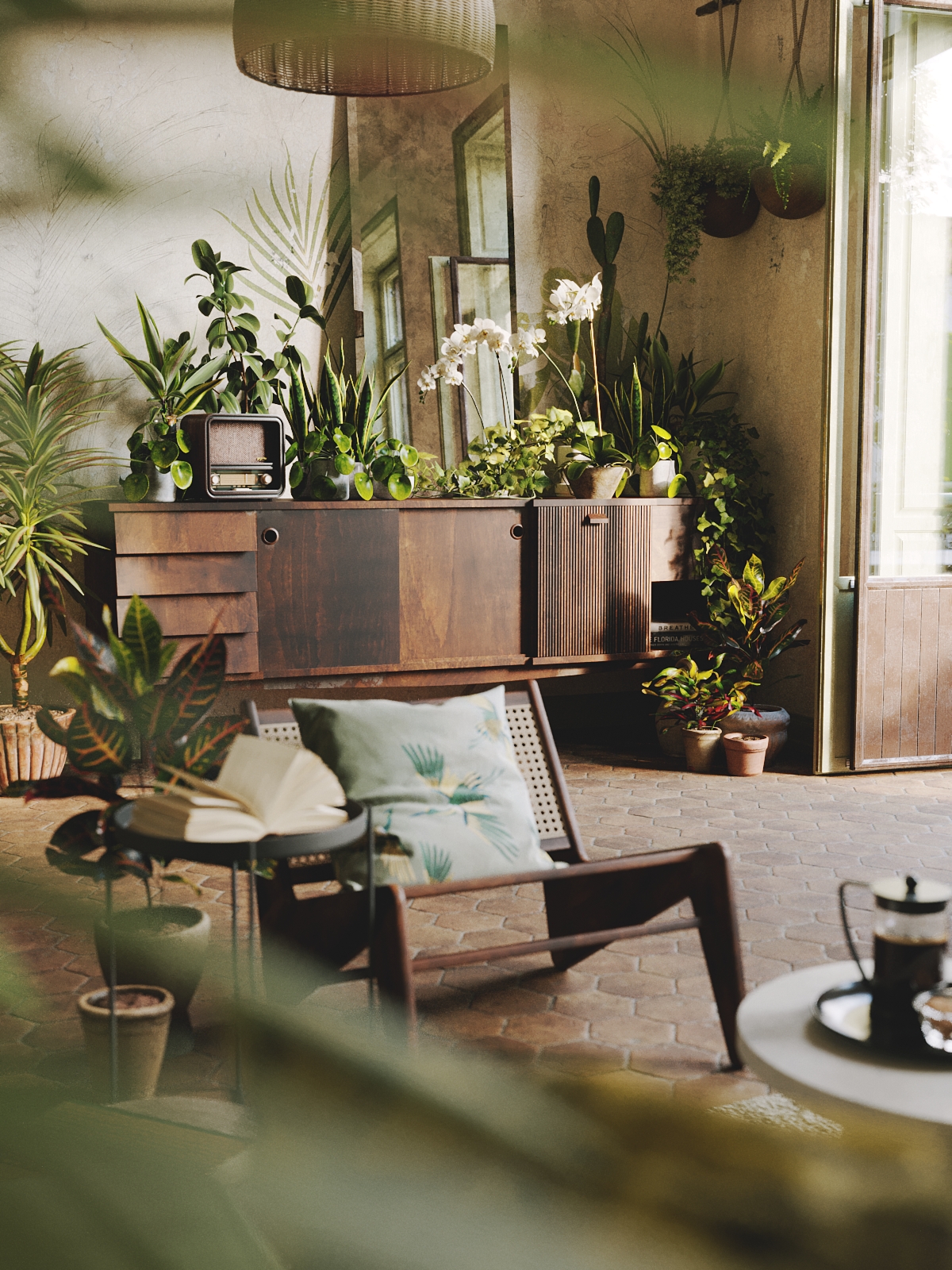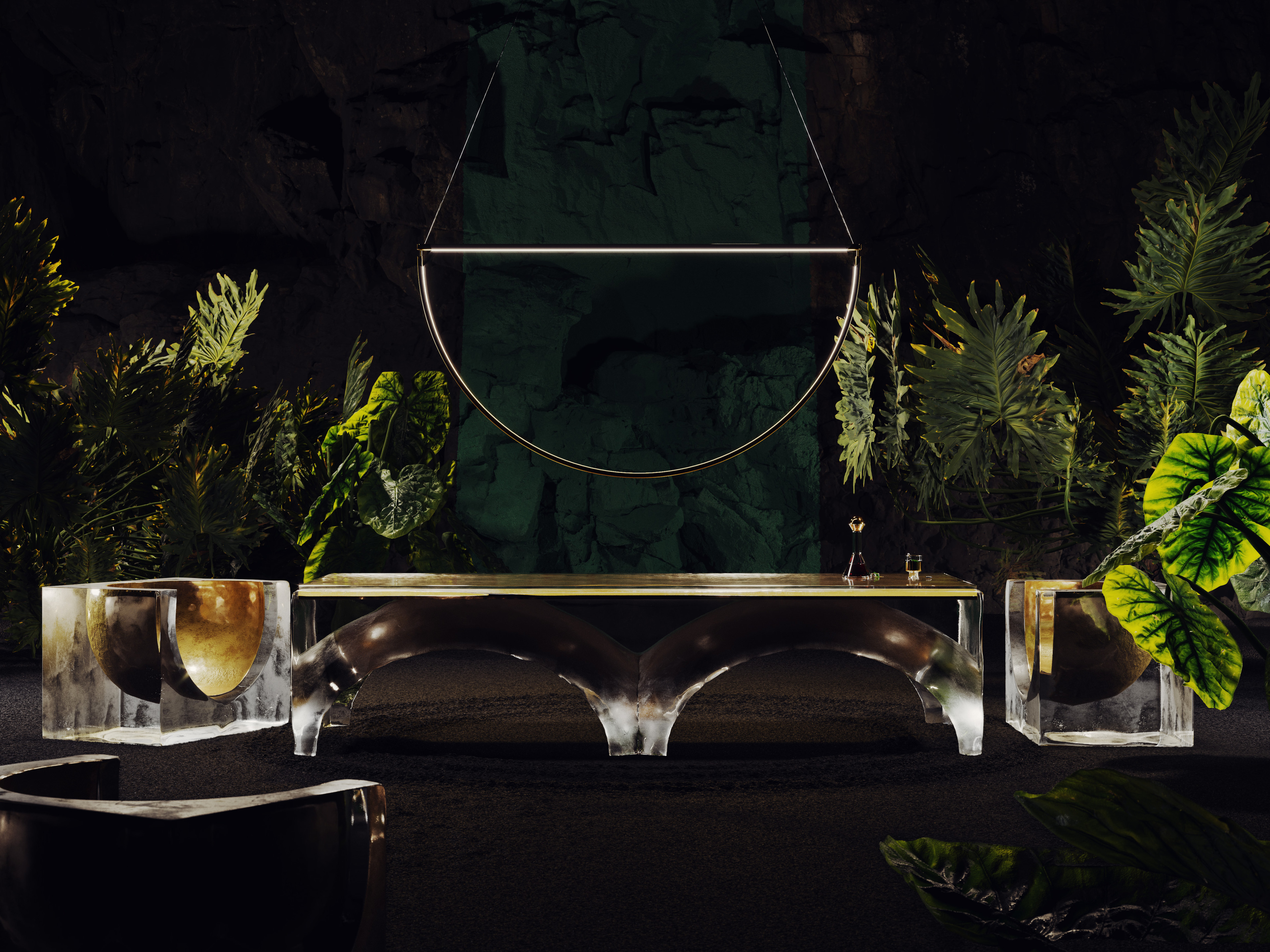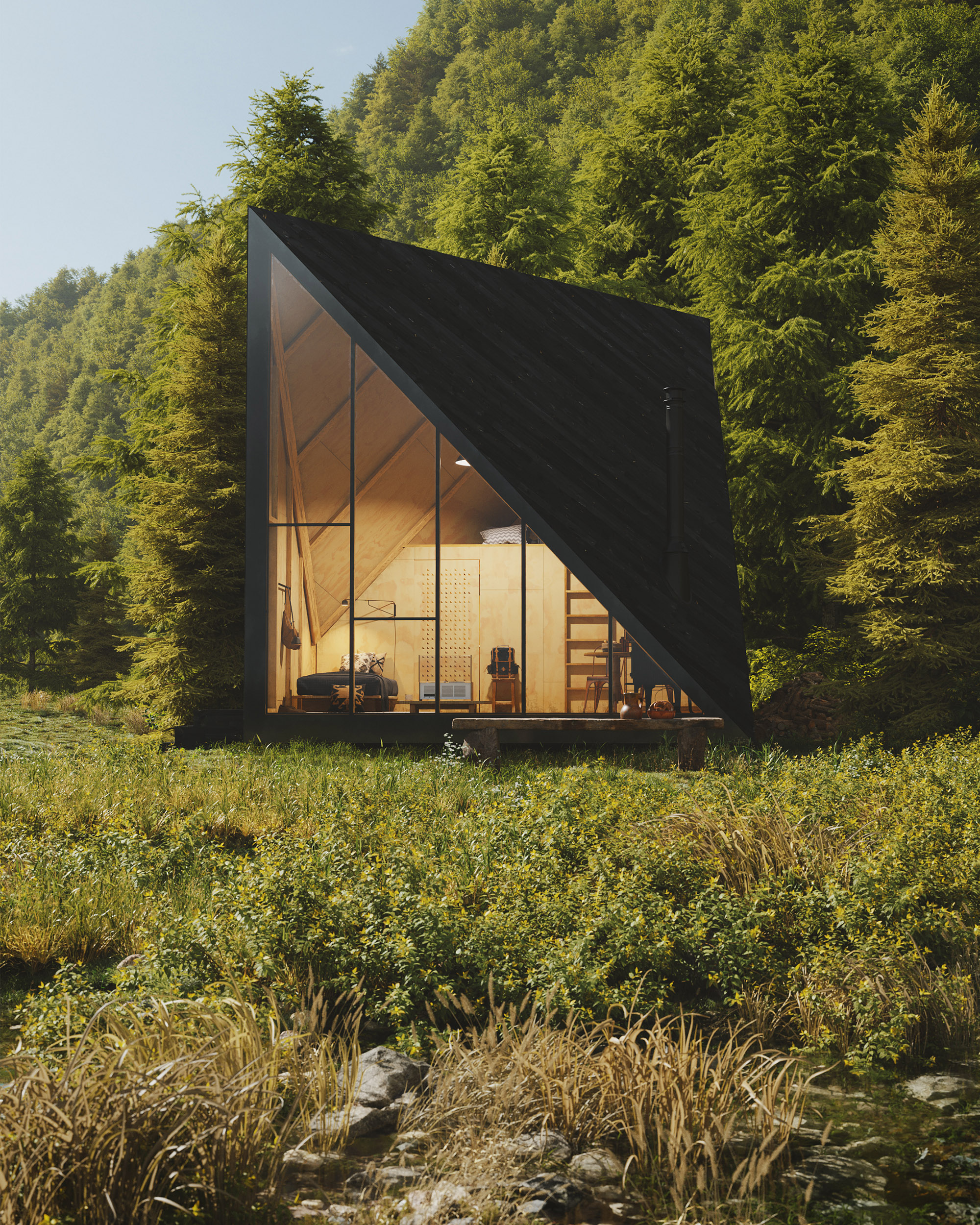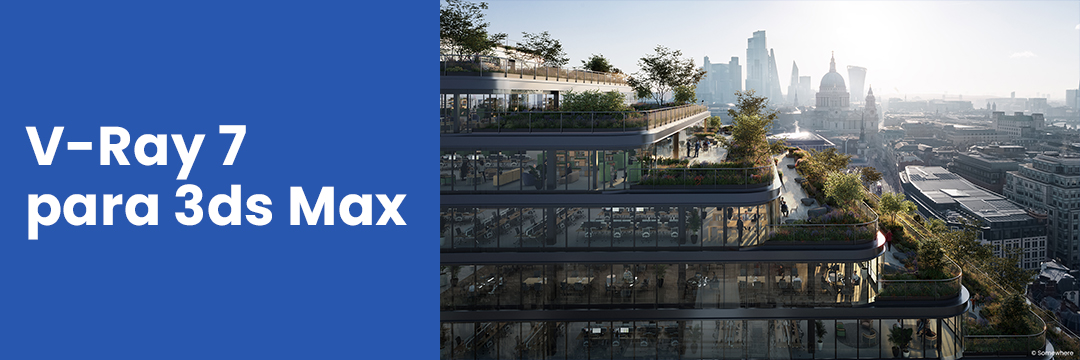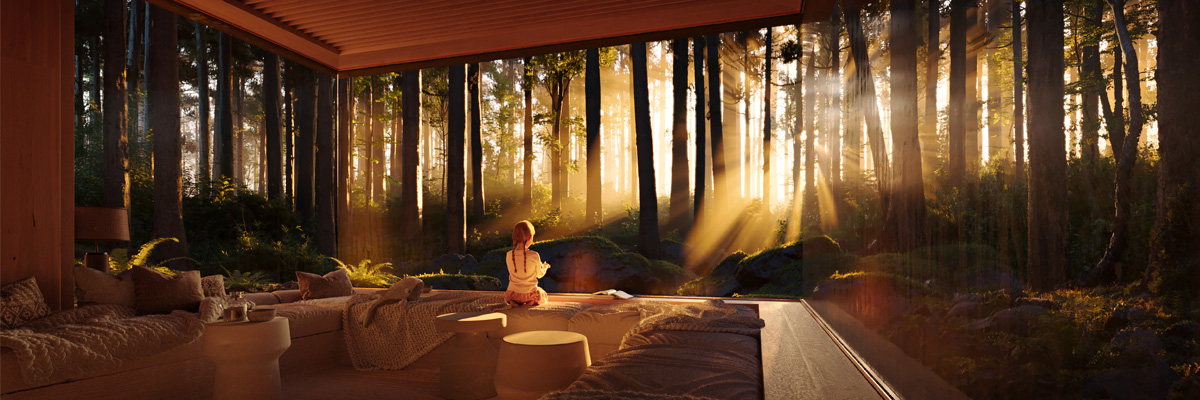
Today we have the pleasure of interviewing Bartosz Domiczek and Artur Tamiola, the artists behind CommonPoint, one of the must-see websites for all ArchViz enthusiasts that looking for inspiration and new insights. In this interview we will take a tour from his professional origins to the launch of his last training. We hope you enjoy it!
1. What is CommonPoint.?
Artur: CommonPoint. is a platform where artists from across the 3d field can find tons of knowledge and inspiration. The idea behind it is to help you discover what you have in common with other artists and what makes you unique. As of today, CommonPoint. consists of two parts: there’s a blog, and there’s online training on 3d exterior lighting. On the blog, you’ll find articles that go deep into subjects such as using HDRIs or creating greenery shaders, but also building contrast in images or conducting creative research. And with the training, you can study illuminating the most important commercial scenarios and understand the whole lighting process.
The core of CommonPoint is uncovering rules universal for many artistic fields, often irrespective of used software. This way, you’ll be able to see the bigger picture of working in the 3d field and go down to the smallest details and nuances. And that’s what basically the CommonPoint. is all about.
2. Tell us about your individual career and how this idea of collaboration between you came about.
Bartosz: It all came together when Artur and I started just talking on Discord about all sorts of things. Not just CG-related, but mostly that. We were curious if we go about different creative problems the same way. If there is any golden rule, you should always follow it. And it was all very inspiring. That’s why we’ve decided to articulate what we discovered and pass it on to the rest of our colleagues. We have a different professional experience, and it actually helped us put things in a wider perspective for the 3d community.
I have a background in architecture and traditional art, so gravitating towards arch-viz was natural for me. I also devote a large portion of my time to personal projects and explore them in terms of space, environment, and world-building. While Artur comes from a creative agency and production house background mostly. And that experience gave him a unique insight into how to translate real-life phenomena into 3d art using all the tools we have at our disposal as artists.
In CommonPoint we basically combine our strengths to find out how to go about 3d graphics and share it with others.
3. In terms of content, what is your workflow? How do you organize yourself?
Bartosz: We have two workflows, actually. One’s a typical commercial pipeline, and another is for our educational content.
Commercially, we work like any other 3d artist in the industry. Usually, each of us carries on different projects. We use 3dsmax, Chaos Corona and Photoshop. To communicate with each other and with our contractor, we use Miro. If we work together on animations and need to share scenes, Dropbox is our go-to solution. At the same time, we try to turn all this commercial experience into educational content. And this is a different kind of beast.
Artur: CommonPoint is basically our creative sandbox, and the workflow is very much different. We always start by talking about an issue, whether it is something worth pursuing. We do research, trying to find the widest angle possible. Fast forward, we have a “brain dump.” Just spewing out everything that’s on our minds. And it’s crucial to write it all down. Cause that’s the only way to organize our thoughts in a logical, coherent way. And sometimes it means we have to write 10 pages of bad text first.
We try to structure it all somehow and find an appropriate medium to convey knowledge. There are a lot of different solutions, and we’re constantly in search for new ones. Whether it’s an image, text, video or works of other artists you can get inspired from. And finally, we do some polishing and share it with you.
4. It is common to see other collaborations with various artists on your blog. Tell us what is the criteria to choose them?
Bartosz: We love inviting different people because we want to diversify our point of view and soak up knowledge from others. There are plenty of people in the industry who deserve more publicity and if there’s an opportunity, we act on it. The key to choosing our guests was always the topic we were working on. As we said, we start each task with research, and we always come across renders that inspire us. So we try to invite the authors to share their insights. We also know by heart the works of many artists, and we consider it an honor if they appear on our blog.
In the future, we’d love to work with directors, copywriters, and musicians to find a real common point between various forms of art, so that everyone can benefit from it.
5. You’ve mentioned new training content coming up, what can you tell us?
Artur: Yeah, it’s finally here, and we’re happy to share some details about it. CommonPoint Masterclass 3d Exterior Lighting is a 24-hour-long, prerecorded online training that will take you through the whole creative process of lighting in exterior shots. You’ll see a complete breakdown of the most important commercial scenarios like day, sunset, night, and overcast. You can follow it step by step, solving one problem at a time. This will be especially beneficial for junior and intermediate 3d artist. But if you’re more experienced and want to go even further, there’s plenty of content to do so. You’ll learn how to build volumetric-based scenarios or create luts on your own. Plus some advanced tips and tricks.
We’ll go over issues like composition, color, shaders, depth, light direction and many other concepts that will help you have full control over the outcome. You’ll train your eye to immediately recognize potential in your renders or spot possible mistakes. And on top of that, you’ll gain technical proficiency in using 3ds Max, Corona, and Photoshop to make it all happen.
6. How can students access?
Bartosz: You can go to CommonPoint. website and buy instant access to all 29 prerecorded lessons of the training with all bonuses and extra content. On top of that, you’ll get a full 3d scene to train on. It’s exactly the same scene we worked on in the training, complete with all the assets. When you’re done learning, you can use it however you like, even commercially. There are some HDRIs that are for educational purposes only, but you’ll get some sweet deals from our partners, including 3d collective, to have them in your collection. A must-have bundle in our opinion, so you can buy them with a discount.
And if you’re ok with waiting a bit and don’t need the scene, you can go to our YouTube channel. Every month, a new lesson will go up there for free, so you can learn steadily over the course of the next year and a half. That’s right. 21 lessons from the training will eventually be free for everyone, so if you choose to take it at your own pace, feel free to sign up for our newsletter to be first to get noticed when the new lessons go live.
7. How do you balance commercial work and the realization of training content, does one feed the other?
Bartosz: In short: it’s a grind, sweat, and all that kind of stuff. Ever since we started working together, it seems like we’re constantly in the run. We’re both hyperactive kind of guys, which make our collaboration extremely fun. Even though it’s statistically not in our favor for it to work out, we get along really fine. We give each other space for everything and learn how to approach work and life every day. But what can I say, it’s a grind.
Though, what really helps us is good communication and kind of knowing many tricks in 3d, 2d, copywriting, editing, and whatnot. Cause, you know, there are projects where everyone knows what to do, and it just happens. And there are situations when you need to convey a complex idea and find the best possible solution. That surely needs good communication skills and organization.
Artur: On that thought, I try to optimize my time the best I can. I use pomodoro timer to make sure I stay productive and cut off slacking. This allowed me even to find time for luxuries like all-night sleep. But still, it takes a lot of time and effort to make this all happen. So I’m really happy my wife’s patient enough to stick up with my obsession.
And besides all that, we meet with Bartosz and socialize from time to time. Even though we live in two different parts of Poland, about 6 hours drive from each other. We go out and play board games.
8. What are your references and sources of inspiration?
Artur: I’m kind of a hyper-learner, which means I like to soak in everything that exists. In 3d and beyond. Before I started working with Bartek, I wanted to push my career forward, and I tried to find out how bad/good I was. What kind of art people do in 3D, 2D, and whatnot. So I went through the entire Behance, watched everything, which didn’t take much, just 2 months. The real challenge was to watch everything on Vimeo, but after half a year I was practically up-to-date with everything. (You can even see the number of likes at my profile)
So, my advice is to develop the discipline of watching things. We wrote about it a bit in the article about research (link here). Over time, you will start to notice patterns and learn good practices. You’ll train your eye, so you’ll instinctively recognize if something looks good or not. It will help you see the potential in your images. So use references. Save every image that grabs your attention and let it inspire you next time you sit down to do the work.
Bartosz: Just to elaborate on what Artur said, I think it’s a good idea to instill in yourself the habit of looking at all things and analyzing them in terms of creative ideas. Whether it’s a piece of art, a stunning view from the top of the mountain, or a movie. This way, whatever you do, you find references everywhere around you.
9. What recommendation do you have for those who work in the Arch Viz industry?
Bartosz: I feel that brand-new opportunities are emerging all the time, and the ceiling in the industry is very high. And competition is huge, that’s true, but you also have a lot of ways to position yourself as a unique partner in business. Try to solve bigger problems for your clients instead of just creating visualizations. Think of what your clients really need, and show that you’re an expert that can help them with their challenges. If you want to grow your business, invest in your branding and build a network of relations. It will boost the perception of your value and help you win high-profit clients.
Artur: Remember that your client always comes first. You orbit around him, not the other way around. When you communicate with the client, be sure not to leave him with any negative emotions. Even when you talk about your skills and what you can do, focus on how the client can benefit from it. Show yourself as someone they can trust and feel secure with. You can do that by positioning yourself as an expert – like Bartek said. So be sure that you’re the master of your own narrative, and prospective client see you the way you want to be seen.
10. What’s in the future for Common Point.?
Bartosz: We’d love to know that. 🙂 The training is just a touch surface. We still have a lot of educational material for years to come that didn’t make its way into training. And we’d love to share it in the near future. We have a lot of ideas to grow CommonPoint, and there’s no end in sight. We definitely want to devote a large part of our career to making it happen, because articulating and sharing knowledge gives us great satisfaction.
For the time being, we’ve set a course to do the training, and we’ve been navigating this ship for the last year to get there. And only time will tell when it will take us next.
11. How do you see the future of Architectural Visualization?
Bartosz: It’s hard to give a straightforward answer to this question. Architectural visualization, especially in the digital age, is a relatively new industry. It’s constantly evolving and changing. So it goes without saying that it won’t stay the same in the future, or even 3 or 5 years from now. That’s why, like in all the creative industries, you need to stay on top and adapt constantly.
That being said, what’s evident and probably on most people minds is how big of a part will AI play in arch-viz industry. We are on the crossroads of AI being integrated and potentially disrupting all creative domains. It may sound either scary or quite the opposite. It feels like opening a can of worms. It’s a huge subject that we won’t dive deep into right now, but the bottom line is that nobody can tell with any certainty what the future will bring. And there are some good practices that will keep you afloat even if the times are difficult.
Artur: That’s right. So, instead of trying to foretell the future, I’d rather have a different conversation, which is how to adapt and navigate in this ever-changing field. Focus on building true interpersonal relations and having deep understanding about the process as well as the goal of your work. This will make you often indispensable and well worth the money.
On the other hand, I think that many creative branches will sprout out of using AI. You can really benefit from it, if you just keep your mind open for changes. The adaptability is probably the most important skill you can have in this situation. And while architectural visualization might be technically totally different 10 years from now, it will definitely still be rooted in identical values– understanding the unbuilt space and evoking emotions about it. These are interesting times ahead of us, and you can actually feel the thrill of being a pioneer.
I hope you have enjoyed this interview, if you are interested in learning more about the work of CommonPoint., you can visit the following links:
CommontPoint. website
Instagram
As always, we invite you to leave any comments or suggestions at the bottom of this page.


